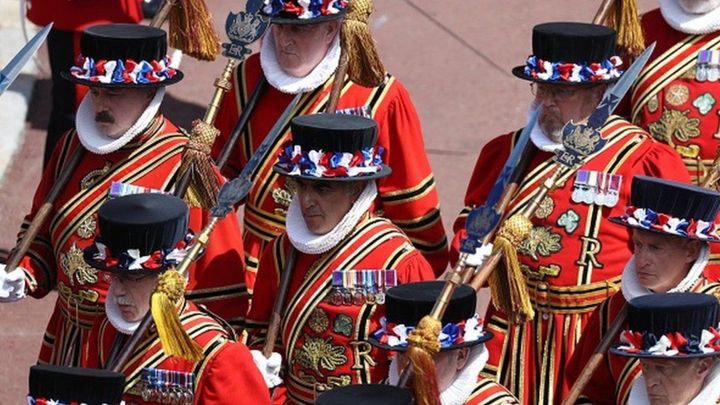
The straight-backed, stiff-jacketed people who stand on guard outside royal spots are a sight for tourists and locals alike.
If you’ve grown up knowing about them, calling the guards “Beefeaters” seems natural.
But not only is it not their actual name ― it’s used to refer to the Yeoman Warders of His Majesty’s Royal Palace and Fortress the Tower of London, and Members of the Sovereign’s Body Guard of the Yeoman Guard Extraordinary (phew) ― but nobody’s exactly sure how it came to be.
Oh. Any theories?
Yes! The name seems to have been in use since about 1485, so we’ve had time to cook up some ideas.
One 1669 comment from Cosimo III de’ Medici, Grand Duke of Tuscany, who frequented the royal Court, reads “A very large ration of beef is given to them daily at the court, and they might be called Beef-eater.”
Another theory goes that buffetier, an Old French word meaning “servant” or “food taster,” could have been mistranslated into the term ― however the Etymological Dictionary of the English Language writing in the 1800s that there’s “not the faintest tittle of evidence” for that idea.
Yet another idea is that the staff were once paid in chunks of beef.
Ultimately, the name is still up in the air.
Why do Beefeaters exist?
Then, they say Henry VII decided the Tower of London needed its own guards ― that’s when the Tower Warders came to be. These people protected the Tower and its famous Crown jewels.
They’re related, and are both often called “Beefeaters,” but are technically separate.
Nowadays, Beefeaters are mostly ceremonial ― though they still uphold some traditions, like shouting “Halt! Who comes there?” nightly at the Tower of London and examining the King’s keys at 9.53 PM as part of the Ceremony of the Keys.
Tradition is a wild thing, isn’t it?